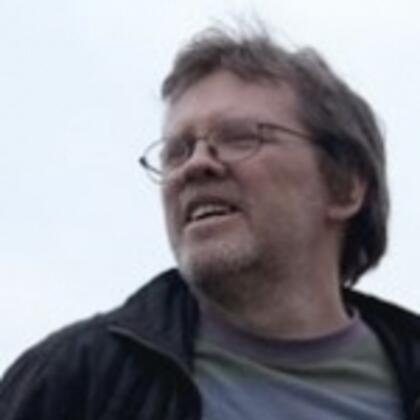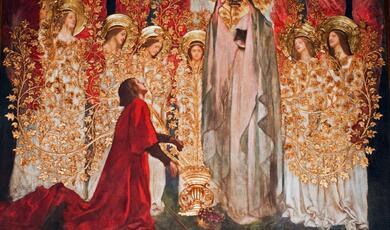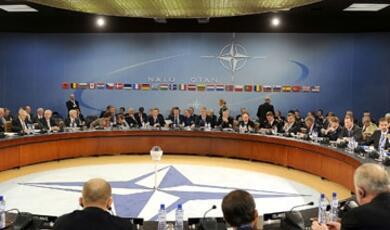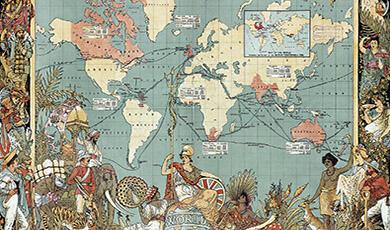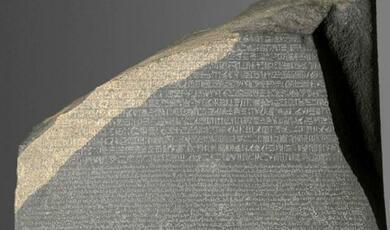Professor Morgan, of the University of Manchester, examines the wider context of the Communist Party in Great Britain. What we're its aims, how closely was it tied to the Communist Party of Russia, and what use dod it make of it Middle Class Recruits. This is a fascinating history of inter war Britain that charts the rise of the Communist Party in Britain.
1 May 2014
The Communist Party of Great Britain
and Middle Class Recruits
Professor Kevin Morgan
1924: Moscow & Fifth world congress, delegates from Britain asked to describe work among middle classes. Their answer: ‘none’.
CPGB at this point and throughout 1920s one of Comintern’s most solidly and unabashedly proletarian sections, rooted in the old industrial Britain, and with very few middle-class members except those inherited from older movements like guild socialism.
Compare with CPGB’s 14th national congress Battersea 1937
- nearly half the 500 delegates aged under 30
- well over half have joined since 1932 (most of them since 1934); of those in paid employment nearly as many work in clerical and professional occupations as in industry (152 vs 186)
Also thirteen students, and others who will have graduated in 1930s; but here will keep in mind the wider middle class, manifestly growing in inter-Britain, within which attending university is anything but a universal experience.
Two obvious things follow from these contrasting images:
(i) How much the phenomemon of the middle-class communist in Britain was one dating essentially from the early 1930s: a clear generational as well as social character as already identified.
(ii) CPGB, a party whose composition was changing rapidly over time.
Socially and politically, a very different environment for the middle-class recruit by 1937: encountering a critical mass of people not unlike yourself, as compared with the forbidding and sometimes aggressively proletarian organisation previously encountered almost anywhere but the universities.
Our research on communist biographies: differences of a few years make a big difference to the sort of party you joined, hence not a cohort but a series of overlapping generational cohorts.
For those already making their way into the party by late 1920s, the key push factor is the great depression, compounded by the memory and threat of war and (in due course) the fascist regimes that exemplify that threat.
This is a world that seemed as if designed to radicalise the young and idealistic; many attracted by the revolutionary alternative of communism and its embodiment in the Soviet Union (or at least Soviet films and magazines).
But from Fabians to ILP and Socialist League, there are other places than CP in which to give voice to such views; more welcoming environments for middle-class recruits.
Within CPGB at this stage, the distinctive contributions of middle-class adherentts are not much valued, while Lenin school is providing a Bolshevik finishing school for working class activists with prior claims to leadership functions.
First small groups in universities, but Dobb’s attempts to set up intellectual quarterly thwarted, while Dobb’s books are alternatively patronised and savaged in the Daily Worker.
It is adoption of popular front approach that thus provides the space for a more considerable middle-class presence within CP.
- Formally identified this with Seventh World Congress, but already evident with the first campaigns around fascism and the Reichstag fire trial 1933.
Specific organisational provision for middle-class members mainly after the war
instead, three key factors:
(i) Popular front emphasis on all party members, whatever their background, working through broader movements where they lived and worked to maximise party’s influence and campaigning impact.
Already front organisations like RTS, but in 1930s a plethora of publications, campaigns, institutions, many specifically addressed to professional or cultural workers.
By 1938 not only had Modern Quarterly appeared, but Marx House, Unity Theatre and, the AIA, above all LBC with a membership by this time some three times that of CP itself.
In LBC, not yet the party itself, one finds poets, artists’, doctors’ and scientists’ groups that prefigure CP’s post-war professional groups.
Even in the universities, in which communists for a time are numerically prredominant among the politically active, they work through broader-based bodies like ULF and NUS.
Also crucial, the channelling of CPGB’s strong TU orientation towards white-collar and professional unions, in which communists may play a formative or leading role, e.g. clerks, teachers, scientific workers, building technicians, Equity, civil servants’ unions
(ii) public recognition extended middle-class standard bearers, and the corroboration these provided of its claim to a leading role in the defence of culture against fascism
Spain the cockpit, and for hundreds the ultimate commitment
- Most volunteers from working-class backgrounds, criticism sometimes made that so much more is made of middle-class volunteers like Fox, Cornford, Guest
Cornford in particular a hero, martyr and role model
The very titles A Writer in Arms, A Scientist Fights for Freedom provide a validation and celebration of the values represented by such figures.
¬(iii) The gradual reduction of Comintern subsidies may seem a tangential connection; but it Moscow’s subventions had provided the financial basis for the CP’s workerism, as working-class activists took on political and administrative responsibilities from which they might otherwise have been excluded by their material circumstances.
As these subventions are scaled down, there is a reversion to established practices in which time and social capital is contributed by those who had the opportunity to do so.
Popular front communism thus relies on young and passionately committed middle-class recruits to provide the ill-paid or voluntary workers on which so many campaigns depended in social terms suggests a parallel between 1930s communists and early Fabians: also low on numbers, but made up for it through permeation.
LRD had actually begun life as FRD and under communist direction provides the same unsung activities of servicing the labour movement through information and technuical support.
LRD workers / volunteers include Margot Heinemann, also Roger Simon, whose father Ernest Simon was a keen supporter of the Webbs.
Analogy with Fabians raises two issues regarding the specificity of 1930s communist commitments
(i) While you generally knew who the Fabians were, and they were not accountable for their activities to the Fabian version of King St, this was not necessarily the case with communists.
Hence role of mole or submarine.
Too crude simply to set permeation against infultration; often communists were at the origins of the movements in which they operated, including sometimes local Labour Parties.
Nevertheless, unity platforms in late 30s show leading figures from YCL, LLU, BYPA and LNU, and all in fact are communists.
Like The Man Who Was Thursday but all are already in on the secret - a further bond with this body of activists who did, contrary to what Marx said, sometimes deign to conceal their purpose, and were thus brought closer together.
(ii) How far the class divisions of British society were reproduced within the communist party, or whether it provided a space in which these were surmounted.
Orwell in Wigan or Harrisson in Bolton a reminder of how deep-seated these class divisions were, whereas the CP’s Battersea congress delegates that same year of 1937 look like a cross-class gathering.
Same is true, in theory, of the party branch which, subject to the demographics of the locality, provides a meeting place in which social distinctions are or should be subordinated to a sense of shared ideals and common purpose.
Encapsulated in the notion of comradeship and appelation ‘comrade’; testimonies of the thrill of being addressed in this way.
But this now offset by the channelling of activity into campaigns and organisations reflecting specific work situations or social environments.
One approach is to think of where people found their marriage partners, with obvious exceptions, communists did by and large find their partners among the same social groups as if they had not been communists.
Exceptions we found were mostly middle-class females, typically teachers, marrying male industrial workers beraring masculinist kudos of the worker so graphically evident in communist iconography.
In the challenging of these class barriers possibly more important than the experience of the party is the experience of war.
Already a source both of tension and of comradeship for the volunteers of different social backgrounds who fought in Spain.
Then from 1939 young men called up into the forces, as John Saville describes, either reinforce existing communist commitments or establish new ones.
For a broader population, men and women, there are other forms of war work, including opportunities to work in factories, and generally a massive social upheaval which contributes to the expansion of CP membership far beyond the levels of the 1930s (to which it does not actually return until after 1979).
Sometimes a lasting imprint on the individual (Saville), but ironically CP itself arguably sets about the restoration of a sort of peacetime normality as in British society as a whole.
Increasingly post-war, the specialisation of party activities becomes more or less formalised in e.g. industrial advisories and ‘trade union comrades’ (on one hand) and the new network of party professional groups on the other.
It is directly after the war that these groups are established, and Pollitt formally recognises professional workers by addressing them as such (Beaver Hall).
A restoration of traditional gender divisions? Activists of the 1930s seek to reconcile continuing political commitments with more settled domestic environments, the bringing up of families and the domestic division of labour by which in 1950s Britain this was mostly effected.
Finally what did middle-class communists get out of joining the CP?
In explaining working-class militancy, sociologists bring in the notion of blocked mobility: i.e. the entrapment of gifted and highly motivated individuals within alienating or restrictive work situations.
Has a politically radicalising effect, and means that these energies find an outlet in some other form of activity – of which the entire C20 lab movement was the beneficiary.
Obviously absurd to apply blocked mobility to Simon brothers, Margot Heinemann, Klugmann and others of distinguished professinal backgrounds who held communist commitments.
Nevertheless, our interviews showed how white-collar employments could also provide a sense of deadening, hierarchical, exploitative and socially useless work: politics and CP did not just represent a sacrifice, though it could be that, but a way of enriching your life and providing it with a sense of meaning commensurate with what you would encounter in the Penguin Books and public libraries now available to the young people of the 1930s.
Only example: Dave Marshall, who absolutely hates working as a clerical civil servant and is one of earliest and youngest Britons to fight in Spain and many years later finds a sort of fulflment working as a joiner with Joan Littlewood’s Theatre Workshop.
Communists and former communists may often express disillusionment and/or bitterness regarding stalinism and sometimes the CP itself.
But far fewer of our interviewees described the experience of party membership itself in negative terms.
© Professor Kevin Morgan, 2014


 Login
Login



